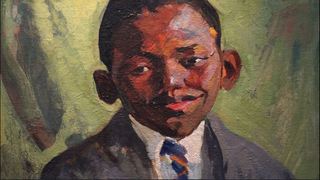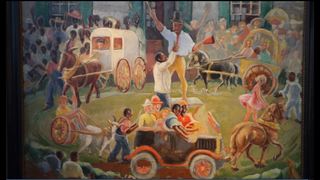EASTON, Md. (WUSA*9)--The Civil Rights struggle has taken Americans over a bridge in Selma and to a sit down counter at a Woolworth’s in Greensboro. But decades before these two events took place there was a white woman on Maryland's eastern shore protesting racism with her art.
In the early 1900’s a 2 mile long driveway was a time machine that led to a better world. It was a period in our history when black Americans were still being lynched. But, many found comfort and kindness at an old plantation called the Hope House.
"Living at the end of a long driveway they created their own integrated world in a time of deep segregation," says art historian, Barbara Paca.
A wealthy, white lady named Ruth Starr Rose lived here. Rose was a prolific painter. But, throughout her life her work was rejected. Not, because of her talent but because of the people she chose to paint.

"She had tremendous rejection. But, she seemed blind to it," says Paca.

While many artists were portraying African Americans in a racist light, Rose was capturing something else. Her work showed a different side of black culture — one of dignity and respect. Many people didn’t understand, says Paca.
"She was censored. She was censored by bigots."

Paca has been collecting Rose’s work for more than a decade. Her collection is now on display at the Waterfowl Building in Easton, Maryland.
"These are people by their expressions they know where they come from and they’re proud of that."
Some of the visitors to the exhibit are related to the people on the walls.
"Oh her work is just beautiful," says Frances Curtis.
"It gives us a glimpse into what our families and ancestors lives were like which is very comforting," says Harriette Lowery.

Many of Rose’s past subjects are buried in a cemetery near her old plantation. Rose died in 1965 and her ashes were scattered in the Miles River. Her old art studio is nearby.
"She was ahead of her time. She was light years ahead of her time," says Paca.
"For a white person she was ahead of her time. That’s how I see it," says Lowery.

Perhaps no painting illustrates Rose’s heart more than a piece she did in 1930. In the background black people are on the left and white people are on the right living a segregated life. But, if you look closely Rose shows us the future.
"She’s taking black and white children and having them lead this integrated life on a wheel which is saying one day our children are going to work this out," says Paca.
The exhibit runs in Easton until June 19th at the Waterfowl Building. Admission is free, but donations are appreciated. It will then travel to Salisbury and then to Annapolis.


